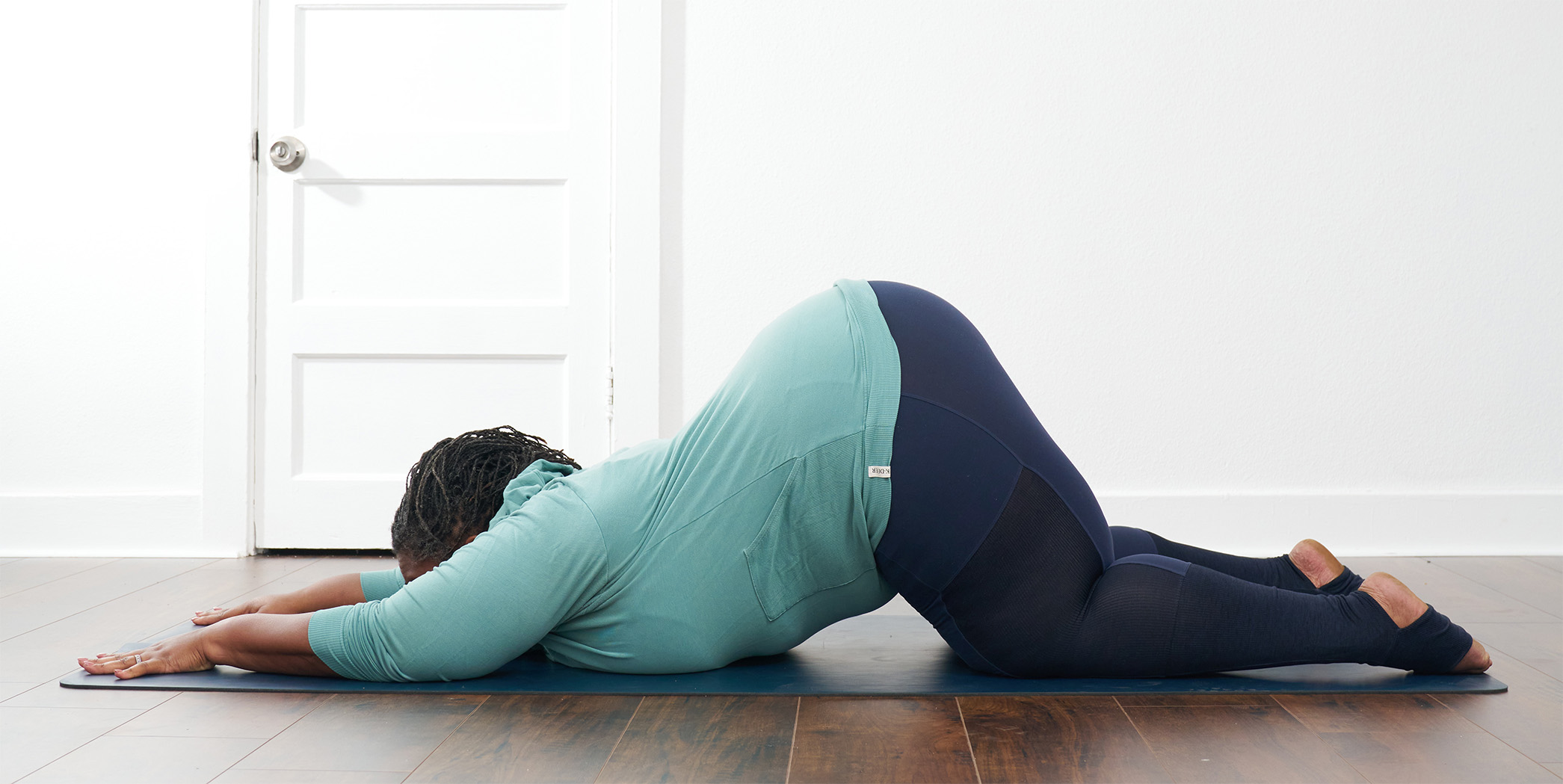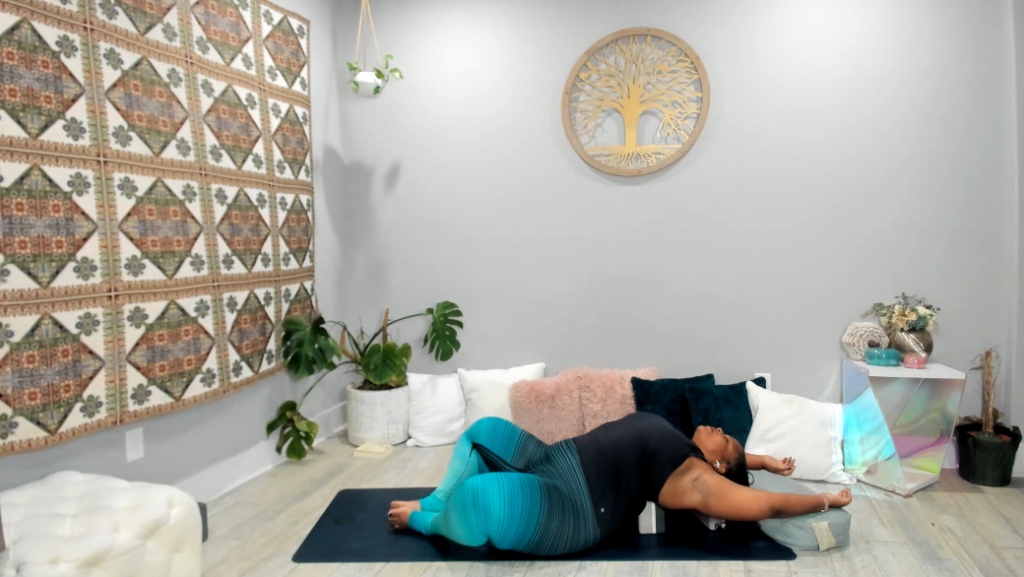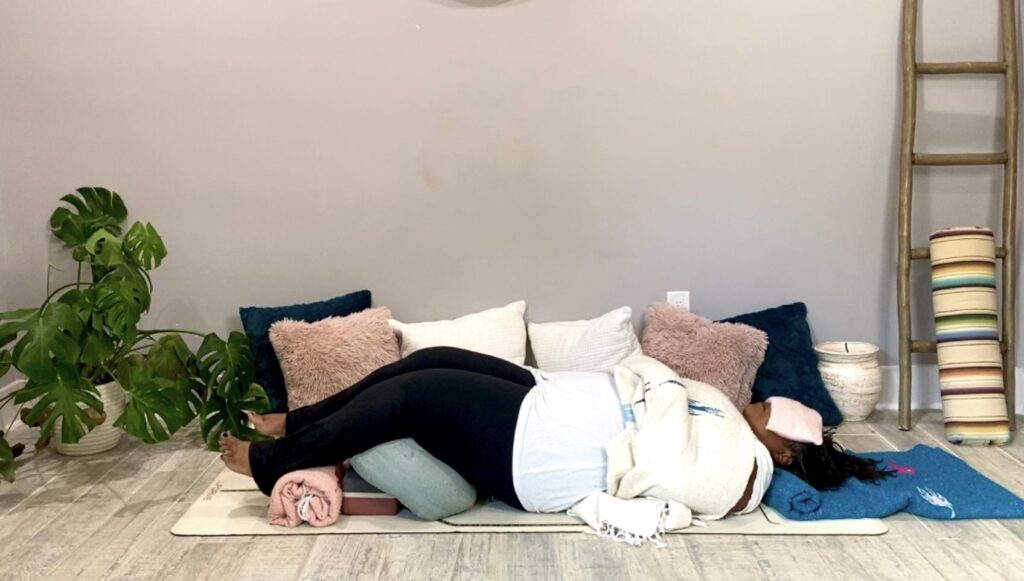Restorative Yoga vs. Yin Yoga

In my opinion, all great yoga is restorative. It restores you back to yourself. But let’s not confuse that with the distinct styles of yoga Restorative and Yin Yoga. And please don’t think they are the same. I have taken numerous classes that were called one of those titles but wasn’t the actual practice. Unfortunately there is much confusion out there for a variety of reasons, of which one is the conflation of the styles in social media and in studios.
With people turning to yoga more and more often for stress and anxiety reduction, they’re learning that they might need a little more tools that can be provided by rest and reimagines resilience.
Yin is Rehearsing Resilience
Yin Yoga was first coined by Paulie Zink, but is most associated with Paul Grilley, his student, as well as Sarah Powers and Bernie Clark. Creating a practice that was essentially acupuncture but with shapes, Paul Grilley helped to develop a style that was built on stressing the body on purpose and in strategic ways. The name originates from being the counterpart to the yang practices of life and active styles of yoga, and suggests that shapes are expressed through a different lens of study and practice, which is also why the names of the poses are different.

Yin Yoga shapes are held for 3-5 minutes mostly, with some exceptions. And you can find classes in which poses are held for 10 minutes or more. In Yin, no two bodies will be in the exact same shape. There is no ideal pose, body, or way of doing the practice. Its inclusion is exactly why people love the practice because all bodies are met in the practice when guided well.
Yin has 3 essential principles: (1) Arrive at a Goldilocks position in which you are in a challenge you can endure while (2) in stillness, and (3) for a while. These long held shapes may be interrupted by yang transitions or simple rest, which allows the practitioner to experience a rebound – the echoes of the posture after the shape and transition out of it are over. These positions are held for long periods of time to target connective tissues, fascia, and joints through stress. It’s important to note that we are always stressing the body unless we are in water floating or in space. This is why we’re stressing the body on purpose, within a sustainable shape.
Muscular Engagement, Alignment and Shapes in Yin Yoga
Alignment is used to get into a shape so that a practitioner arrives mindfully. After arriving into a shape that may be sustained, all muscular engagement is released so that the deeper tissues may be accessed. Of course one would not be able to sustain a Warrior II this way. Yin Yoga shapes are floor based with one exception, Dangling–a standing forward bend.
Props or No Props, Struggle vs. Discomfort
There is a common assumption out there that props aren’t used in Yin Yoga. That’s simply not true. There are shapes that require props just to be in the pose, like Bridge / Pontoon, and several chest openers. Props do not make a practice easier. In fact, they are used to increase sensations oftentimes in Yin Yoga. Props also allow a practitioner to move beyond struggle, which isn’t a goal of yoga, into discomfort, which is to be expected in most yoga movement classes.
So what the heck is Restorative Yoga?
Largely based on teachings from notable Iyengar disciple Judith Hansen Lasater, Restorative Yoga is a practice of resting in shapes in alignment. Props are used in a variety of ways to create an infrastructure of the pose so that no work is done while there.
Restorative Yoga is rehearsing rest.
While rest is elusive to so many who deal with anxiety, insomnia, and other hormonal shifts that interrupt sleep, Restorative Yoga helps the practitioner rest with awareness so that they are practicing a pause between working and sleeping. The practice may be as short as 15 minutes or as long as 2 hours. In general, shapes are held for 5-15 minutes, and it is all restful. In Restorative Yoga, we’re leaning into the tamas – the quality of inertia – to let go of doing and to welcome in receiving.

Restorative Yoga doesn’t exist without props
In this practice, the body is propped in alignment with many and numerous props. Unlike Yin, the shape is propped in a way that the body would be in if muscles were engaged. But, like Yin, once the practitioner arrives at the shape, they release all muscular engagement. The goal, if any, is 100% comfort that is available that day.
Which is the practice for me?
Both practices are essential for anyone with a goal of system regulation. That is, if you want an effective stress management strategy, both practices are gamechangers.
Yin will call on you to approach the practice differently, think about shapes differently, and will ask for you to take a different approach to the movement practice. You will make new relationships between your mind and body because you are radically present to the sensations of your body and how they’re managed.
Restorative will ask you to treat yourself differently. It will ask you to buy into the importance of rest as a function of evolving your yoga practice beyond the physical. It will also as you to practice surrender as you embrace the beauty of creating a hard stop to your day.
What is for certain, there will be a time in which you’ll need to call on your resilience and ability to rest. Rehearsing these practices makes answering that call much easier.